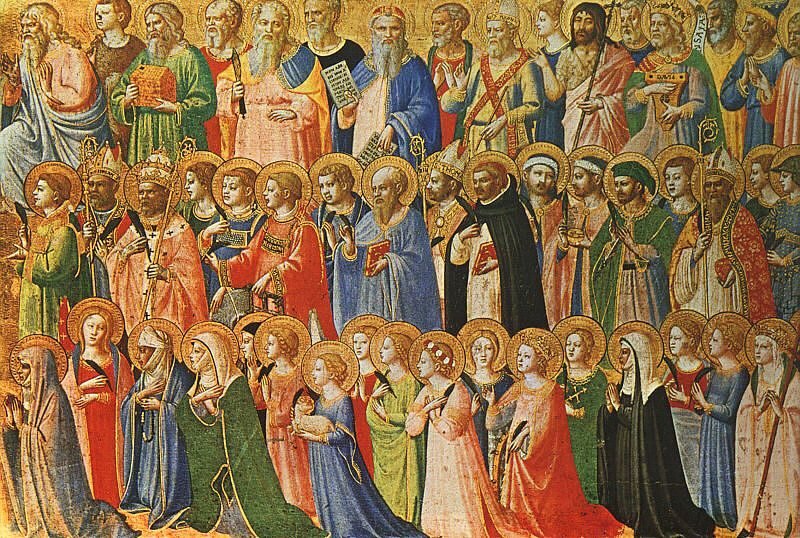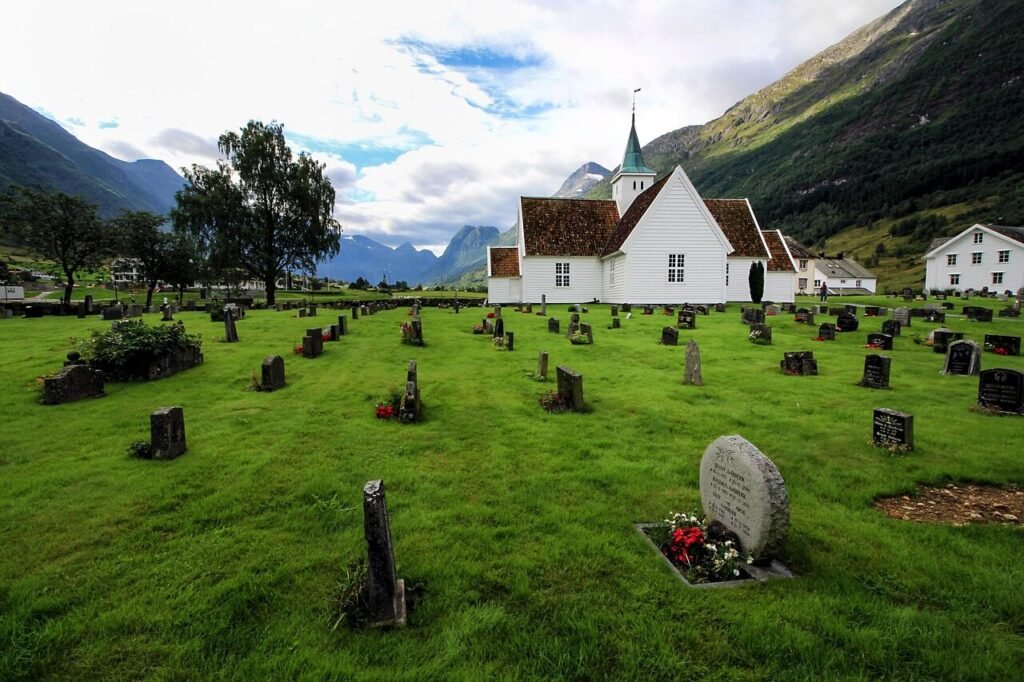Table of Contents
A pop culture myth:
Each October, popular media and internet memes repeat the claim that Halloween descends directly from the Celtic pagan festival of Samhain—a harvest-end rite of bonfires, sacrifices, and spirits—which Christian missionaries supposedly “baptized.” While Samhain did exist, and some pre-Christian seasonal customs influenced European folk culture, the idea that Halloween is a linear survival of that pagan festival oversimplifies the historical record. Serious historians such as Ronald Hutton and Nicholas Rogers demonstrate that Halloween developed primarily within Christian liturgical and pastoral life, not as a repackaged pagan rite. The supposed continuity from Iron Age Samhain to modern trick-or-treating is a modern myth (Hutton 362; Rogers 15). The true story of Halloween is one of Christian commemoration, adaptation, and evangelization—a season born from All Hallows’ Eve, All Saints’ Day, and All Souls’ Day.
All Hallows’ Eve, All Saints, and All Souls: The Christian Framework:
The name Halloween derives from “All Hallows’ Eve,” the vigil of All Hallows (All Saints). The early Church instituted the feast of All Saints to honor the innumerable martyrs who died for the faith during Roman persecutions. Pope Boniface IV (†615) consecrated the Roman Pantheon to the Blessed Virgin Mary and all martyrs—a symbolic transformation of a pagan temple into a Christian church.
By the eighth century, Pope Gregory III established a commemoration of all saints on November 1, later extended to the entire Church by Pope Gregory IV (827–844) (New Advent). The next day, November 2, became All Souls’ Day, instituted by St. Odilo of Cluny around 998 A.D., as a day to pray for the faithful departed undergoing purification in Purgatory.
These three days—October 31, November 1, and November 2—form Allhallowtide: a sacred triduum reflecting on the Four Last Things: death, judgment, Heaven, and Hell. Far from glorifying darkness, Halloween originally invited Christians to meditate on mortality and divine mercy through the lens of Christ’s victory over sin and death (Richert, “Should Catholics Celebrate Halloween?”).

Samhain, Local Customs, and Christian Transformation:
Samhain was indeed a Gaelic seasonal festival marking the end of the harvest and the onset of winter. Early Irish sources mention it as a liminal time between seasons when boundaries between life and death were thought to blur (Time Staff, “What Is Samhain? What to Know About the Ancient Pagan Festival That Came Before Halloween.”). Yet historians caution against conflating this ancient agrarian festival with medieval or modern Christian practices.
Ronald Hutton notes, “The medieval records furnish no evidence that 1 November was a major pan-Celtic festival, and none of religious ceremonies, even where it was observed” (Stations of the Sun 362). In other words, while Samhain existed, there is no historical bridge linking it directly to All Hallows’ Eve.
When Christianity spread across Celtic lands, it did not erase local traditions but reinterpreted them. Just as the Church transformed pagan temples into churches, it “baptized” folk customs—turning harvest fires, seasonal gatherings, and acts of remembrance into opportunities for prayer, penance, and charity. The Church thus integrated natural human rhythms into the supernatural order without retaining pagan worship (St. Augustine, Letter 102).
Medieval and Early-Modern Customs: Souling, Guising, and Jack-o’-Lanterns:
The clearest historical roots of modern Halloween customs lie in medieval and early-modern Catholic Europe.
Souling and Guising. In England, the poor would go door to door on All Souls’ Day, offering prayers for the dead in exchange for soul cakes—small sweet breads symbolizing almsgiving and intercession (Rogers 54). In Scotland and Ireland, similar “guising” traditions involved children in costumes performing songs or prayers for treats. These customs expressed the doctrine of the communion of saints and the spiritual solidarity between the living and the dead.
Lanterns and Jack-o’-Lanterns. The carving of turnips—and later pumpkins—into lanterns derives from Irish folklore. The tale of “Stingy Jack,” a man denied entry to both Heaven and Hell, wandering the earth with a glowing ember in a carved gourd, echoes the Christian moral of repentance and the consequences of sin (Fish Eaters). When Irish immigrants reached North America, they substituted pumpkins for turnips, giving rise to the familiar symbol of Halloween.
Modern Transformations and Misunderstandings:
The secular and commercial version of Halloween emerged in the nineteenth-century United States, shaped by Irish and Scottish immigration, urbanization, and consumer culture (Rogers, Halloween: From Pagan Ritual to Party Night, 118). The practice of trick-or-treating took form in the early twentieth century as a blend of old-world souling and modern civic festivity.
Unfortunately, this transformation led many to forget the holiday’s Christian roots, allowing both neo-pagan reinterpretations and fundamentalist denunciations to dominate public discourse. The result has been confusion: one side claims Halloween is purely pagan; the other sees it as inherently demonic. In truth, neither is historically accurate.

Recovering a Catholic Halloween:
Catholics need not abandon Halloween but can reclaim it as a celebration of hope and holiness. The Church has always sanctified cultural festivals—transforming rather than rejecting them. A Catholic approach to Halloween might include:
- Prayer and Fasting: Treating All Hallows’ Eve as a vigil in preparation for All Saints’ and All Souls’ Days.
- Catechesis on the Four Last Things: Teaching children about death, judgment, Heaven, and Hell through Scripture and story.
- Holy Storytelling: Sharing tales that illuminate virtue and redemption—from Dante’s Divine Comedy to Catholic legends.
- Saintly Costumes: Encouraging children to dress as saints, angels, and biblical figures, transforming costumes into catechesis.
By restoring Halloween’s sacred meaning, Catholics proclaim that “where sin increased, grace abounded all the more” (Romans 5:20).
Conclusion:
Halloween, properly understood, is not a festival of fear but a vigil of faith—a proclamation of Christ’s triumph over death. Its origins lie not in paganism but in the heart of Catholic liturgy. The Church’s ancient triduum of All Hallows, All Saints, and All Souls invites believers to remember the dead, honor the saints, and confront eternity with hope.
To reclaim Halloween is to reclaim the Christian imagination, reminding the world that the grave has been conquered and that “Death is swallowed up in victory. O death, where is your sting?” (1 Corinthians 15:54–55).
Works cited:
Catholic Exchange. “The Origins of Halloween & All Saints Day.” Catholic Exchange, catholicexchange.com/the-origins-of-halloween-all-saints-day/. Accessed 26 Oct. 2025.
Fish Eaters. “All Hallows’ Eve.” FishEaters.com, www.fisheaters.com/customshalloween.html. Accessed 26 Oct. 2025.
Hutton, Ronald. The Stations of the Sun: A History of the Ritual Year in Britain. Oxford UP, 1996.
New Advent. “All Saints’ Day.” The Catholic Encyclopedia, Robert Appleton Company, www.newadvent.org/cathen/01315a.htm. Accessed 26 Oct. 2025.
Richert, Scott P. “Should Catholics Celebrate Halloween?” CatholicCulture.org. Accessed 26 Oct. 2025.
Rogers, Nicholas. Halloween: From Pagan Ritual to Party Night. Oxford UP, 2002.
St. Augustine. Letter 102 and City of God, Book VII.
Time Staff. “What Is Samhain? What to Know About the Ancient Pagan Festival That Came Before Halloween.” Time, 30 Oct. 2018, time.com/5434659/halloween-pagan-origins-in-samhain/. Accessed 26 Oct. 2025.

